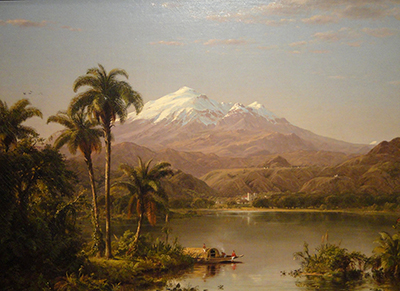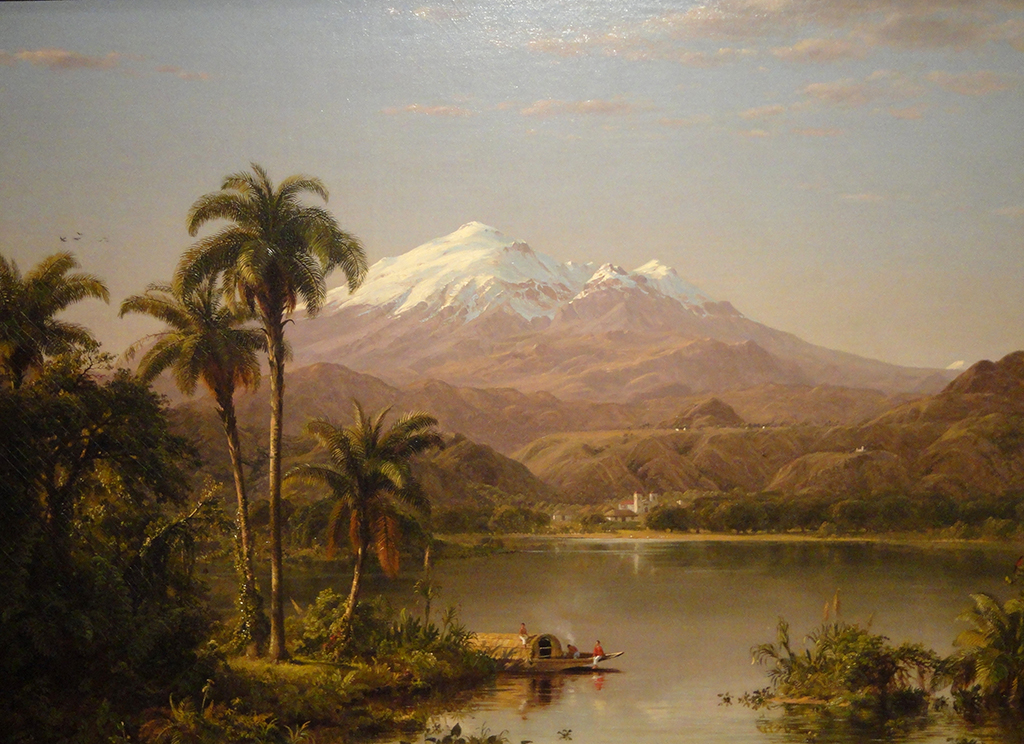 Buy Art Prints Now
Buy Art Prints Nowfrom Amazon
* As an Amazon Associate, and partner with Google Adsense and Ezoic, I earn from qualifying purchases.
Frederic Edwin Church, together with his fellow landscape painters of the 19th century, provided armchair travelers with exotic scenery views never seen before by many. This provision was through extolling not just the northeastern United States natural wonders, but also the wonders of South America, American West, Near East, and Europe.
Many of the 19th-century landscape painters were referred to as Hudson River School Painters according to the often depicted locale. In the year 1853, Church went on a trip to South America. Frederic was inspired mainly by the writings belonging to a prominent German explorer and naturalist, Alexander von Humboldt (1769 to 1859). The vast volume of the scientist, “Cosmos: Sketch of a Physical Description of the Universe” is what interested the artist in particular.
This volume was itself inspired by the trip of Von Humboldt to the Andes. It described a system that is beautifully ordered and harmonious underlying the apparent chaos of the natural world. Von Humboldt motivated artists to record the various tropical features of the locale, and hence share the experience with viewers. Von Humboldt encouraged the artists because he had an understanding of the icy mountaintops, steamy rainforests, and arid deserts as proof of divine harmony in nature.
Church took the call of Von Humboldt seriously. He retraced his route through the Andes while recording the details of life and nature in meticulous oil and pencil sketches along Colombia’s Magdalena River. After coming back to his studio in New York, Frederic Edwin Church created Tamaca Palms using his studies. The studies included those of the boat – referred to as bongo or champan - and the tamaca palm species in the foreground. The attention of Church to minute detail in the canvas indicates the indelible influence of Thomas Cole (1801 to 1848), who was his teacher. He is the founder of the Hudson River School.
One critic was also led to deem Church as the very painter whom Humboldt longs for in his writings. Church retraced the route of von Humboldt while faithfully recording the region’s tropical features and rendering them in such detail that botanists can readily identify the individual species that make up his dense foliage. The Tamaca Palms painting depicts South American landscape scenery. It is stored at the Corcoran Gallery of Art in Washington DC.
The style used in painting is referred to as Romanticism. The art includes a small water body in the middle of land surrounded by mountains. The surroundings appear to be peaceful. Because he was a landscape painter best known for his paintings, the technique, and material that Church used are not a secret. In all his paintings, Church chose great colors, and the Tamaca Palms was not an exception. The colors that he used were peaceful, life-like, and calming. On a closer look at the painting, there is a boat with people and also what seem to be houses in the lowest peak of the valley.




